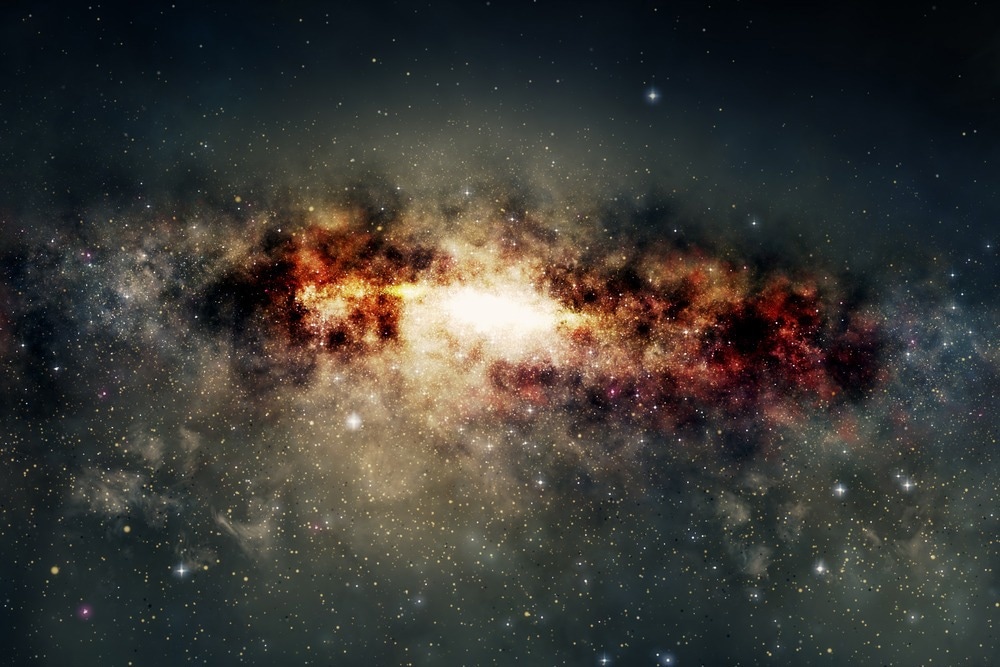A laser mode sensor development by gravitational-wave scientists at the University of Western Australia could be the key to probing beneath the surface of neutron stars. The breakthrough may help researchers test the limits of Einstein’s theory of General Relativity using gravitational waves.

Image Credit: Dabarti CGI/Shutterstock.com
Neutron stars are one of the Universe’s most mysterious and fascinating objects. Formed when massive stars reach the end of their natural lives, the material within these stellar remnants is the densest form of matter that we are aware of. A teaspoon of this matter would weigh 4 billion tons.
This form of matter does not exist on Earth, something that makes the interiors of neutron stars an interesting subject of study for physicists.
The Australian team’s laser mode sensor delivers unprecedented precision and is described in a paper¹ on the online repository ArXiv .
The sensor is able to increase the sensitivity of gravitational wave detectors by eliminating distortions in the mirrors that power them.
General Relativity, Gravitational Waves, and Neutron Stars
General relativity is the field of physics that informs researchers that objects of mass shape the fabric of spacetime like balls of increasing mass placed on a stretched rubber sheet.
With greater mass comes greater curvature — meaning neutron stars with the mass of a star like the sun squashed into the radius of a city make a huge impression on spacetime and become excellent labs to test general relativity.
When massive objects such as neutron stars orbit each other or collide, this launches ripples (gravitational waves) into spacetime. These travel through space carrying information about their source.
Gravitational waves are also launched when massive stars collapse at the end of their natural life cycle. This happens when a star runs out of fuel for nuclear fusion. As well as turning lighter elements into heavier elements, fusion also provides the outward pressure that balances the inward force of a star’s own gravity.
When these processes cease, the star collapses causing a supernova explosion which launches the outer material into space, creates a compact stellar remnant such as a neutron star or black hole, and launches gravitational waves.
Though it was his pioneering theory of general relativity that predicted them, Einstein believed that these gravitational waves were so faint that we had little chance of ever detecting them here on Earth.
However, this theory has been discredited by further research.
Improving Gravitational Wave Detectors
Gravitational waves on Earth are detected using incredibly precise laser interferometers.
The most famous example is the Laser Interferometer Gravitational-Wave Observatory (LIGO)², which consists of two laser arms that are 4 kilometers long and meet in an L-shape.
Gravitational waves are detected when they pass these lasers of the same frequency and phase — which are sent through vacuum chambers that run the length of these arms— and cause a slight warp in one that causes the two to be misaligned slightly.
LIGO will help identify a variation in distance between its operating mirrors 1/10,000th the width of a proton — comparable to determining the distance to the closest star , which is around 4.2 light-years away — to a precision smaller than the width of human hair.
While the mirrors of LIGO and its contemporary gravitational wave detectors contain a great deal of optical power thanks to its lasers, something which is increased due to its mirror pairs, tiny distortions in these mirrors can cause excess noise, a loss of sensitivity, or even knock the detectors offline — albeit briefly.
The team’s idea was to zoom in on the laser beam of gravitational wave detectors and search for the immeasurably small “wiggles” in power limiting the detector’s sensitivity.
The approach builds on a problem in telecoms in which engineers are experimenting with ways to send more data through optical fibers. The similarity hinges on the need to detect so-called eigenmodes — a natural vibration of an oscillating system in which all the various parts move together at the same frequency.
However, the solution applied to the telecoms to measure eigenmodes was not effective enough for the needs of a sensitive gravitational wave detector.
This led to the development of an ultra-thin surface with a specially designed pattern. The result was a proof-of-concept 1,000 times more sensitive than the similar apparatus developed for telecoms.
The hope is that this solution to mode-sensing can be applied to gravitational wave detectors to improve their sensitivity, facilitating the deeper investigation of neutron stars and general relativity.
References and Further Reading
¹ Jones. A. W., Wang. M., Zhang. X., et al. (2022) Metasurface Enhanced Spatial Mode Decomposition. https://arxiv.org/pdf/2109.04663.pdf
² About Ligo, LIGO. [Online] Available at: https://www.ligo.caltech.edu/page/about
Disclaimer: The views expressed here are those of the author expressed in their private capacity and do not necessarily represent the views of AZoM.com Limited T/A AZoNetwork the owner and operator of this website. This disclaimer forms part of the Terms and conditions of use of this website.